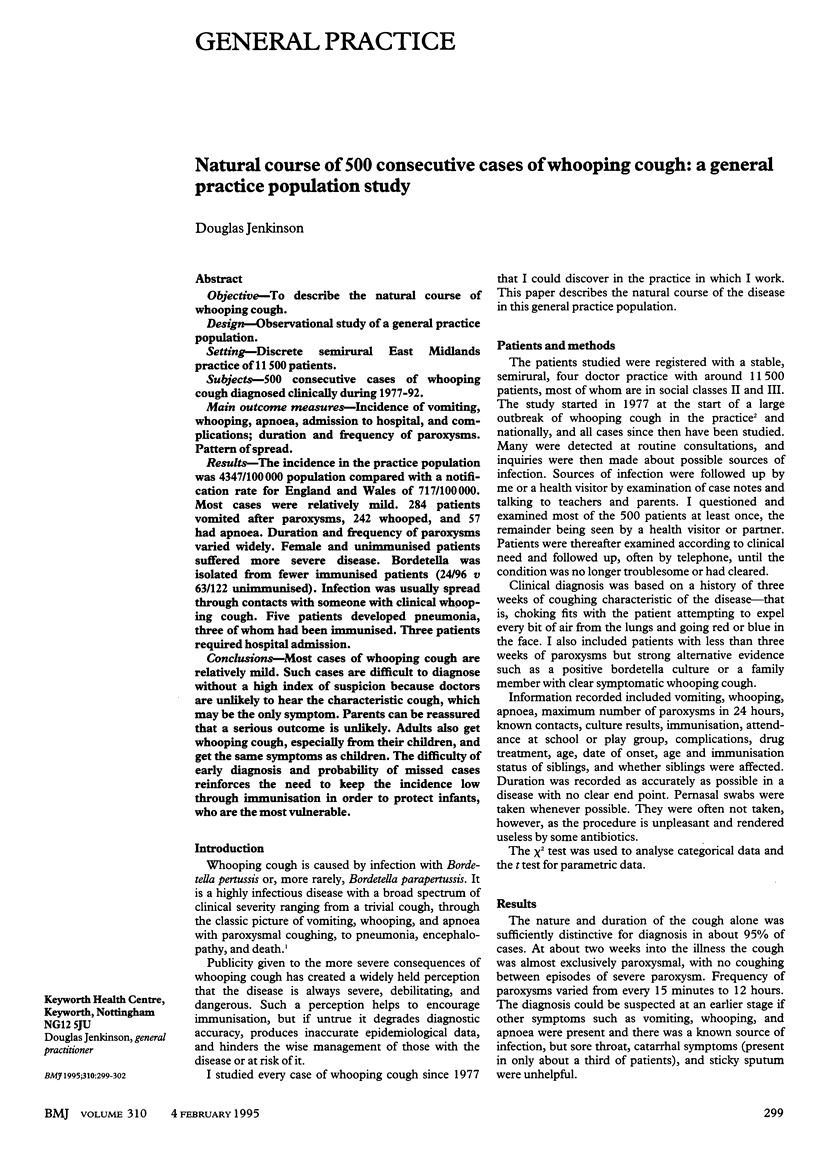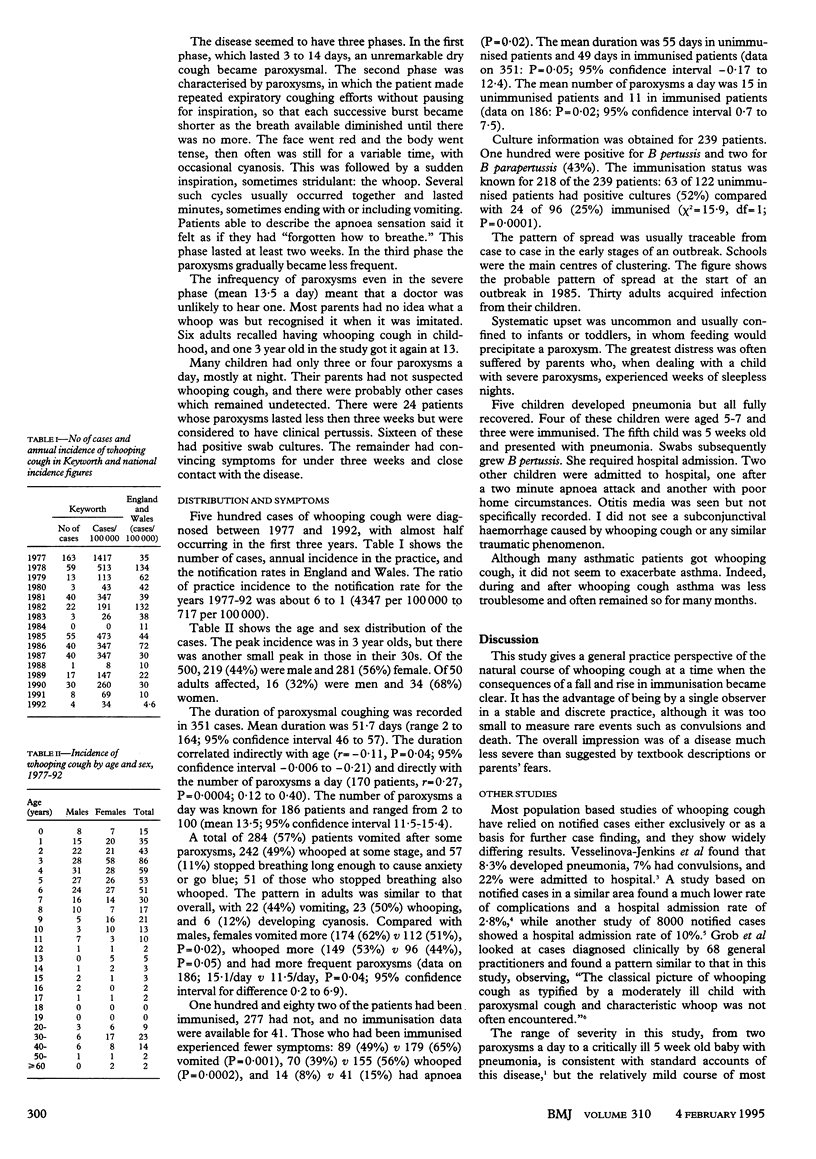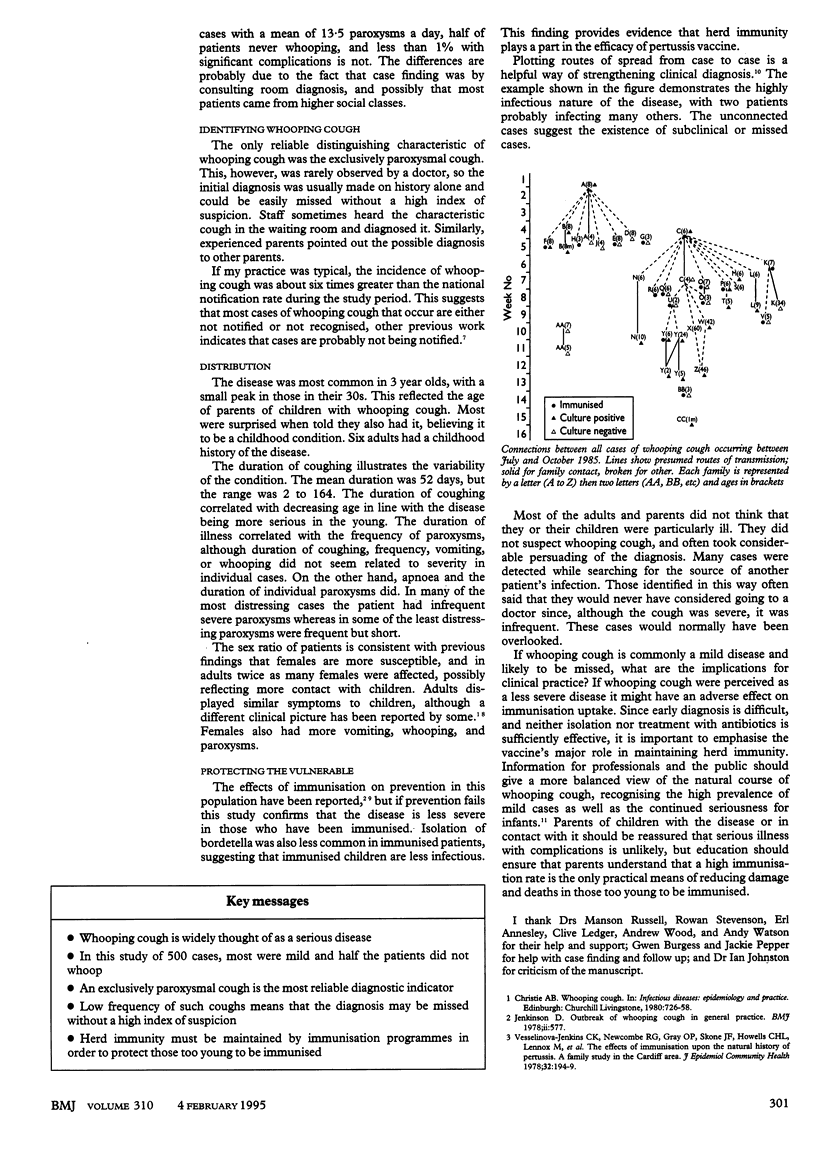Abstract
OBJECTIVE--To describe the natural course of whooping cough. DESIGN--Observational study of a general practice population. SETTING--Discrete semirural East Midlands practice of 11,500 patients. SUBJECTS--500 consecutive cases of whooping cough diagnosed clinically during 1977-92. MAIN OUTCOME MEASURES--Incidence of vomiting, whooping, apnoea, admission to hospital, and complications; duration and frequency of paroxysms. Pattern of spread. RESULTS--The incidence in the practice population was 4347/100,000 population compared with a notification rate for England and Wales of 717/100,000. Most cases were relatively mild. 284 patients vomited after paroxysms, 242 whooped, and 57 had apnoea. Duration and frequency of paroxysms varied widely. Female and unimmunised patients suffered more severe disease. Bordetella was isolated from fewer immunised patients (24/96 v 63/122 unimmunised). Infection was usually spread through contacts with someone with clinical whooping cough. Five patients developed pneumonia, three of whom had been immunised. Three patients required hospital admission. CONCLUSIONS--Most cases of whooping cough are relatively mild. Such cases are difficult to diagnose without a high index of suspicion because doctors are unlikely to hear the characteristic cough, which may be the only symptom. Parents can be reassured that a serious outcome is unlikely. Adults also get whooping cough, especially from their children, and get the same symptoms as children. The difficulty of early diagnosis and probability of missed cases reinforces the need to keep the incidence low through immunisation in order to protect infants, who are the most vulnerable.
Full text
PDF



Selected References
These references are in PubMed. This may not be the complete list of references from this article.
- Grob P. R., Crowder M. J., Robbins J. F. Effect of vaccination on severity and dissemination of whooping cough. Br Med J (Clin Res Ed) 1981 Jun 13;282(6280):1925–1928. doi: 10.1136/bmj.282.6280.1925. [DOI] [PMC free article] [PubMed] [Google Scholar]
- Jenkinson D. Duration of effectiveness of pertussis vaccine: evidence from a 10 year community study. Br Med J (Clin Res Ed) 1988 Feb 27;296(6622):612–614. doi: 10.1136/bmj.296.6622.612. [DOI] [PMC free article] [PubMed] [Google Scholar]
- Jenkinson D. Outbreak of whooping cough in general practice. Br Med J. 1978 Aug 19;2(6136):577–578. [PMC free article] [PubMed] [Google Scholar]
- Jenkinson D. Whooping cough: what proportion of cases is notified in an epidemic? Br Med J (Clin Res Ed) 1983 Jul 16;287(6386):185–186. doi: 10.1136/bmj.287.6386.185. [DOI] [PMC free article] [PubMed] [Google Scholar]
- Marcovitch H. Recognising whooping cough. Br Med J (Clin Res Ed) 1986 Feb 8;292(6517):360–361. doi: 10.1136/bmj.292.6517.360. [DOI] [PMC free article] [PubMed] [Google Scholar]
- Miller C. L., Fletcher W. B. Severity of notified whooping cough. Br Med J. 1976 Jan 17;1(6002):117–119. doi: 10.1136/bmj.1.6002.117. [DOI] [PMC free article] [PubMed] [Google Scholar]
- Vesselinova-Jenkins C. K., Newcombe R. G., Gray O. P., Skone J. F., Howells C. H., Lennox M., Hine D. J., Jenkins P. M., Munro J. A. The effects of immunisation upon the natural history of pertussis. A family study in the Cardiff area. J Epidemiol Community Health. 1978 Sep;32(3):194–199. doi: 10.1136/jech.32.3.194. [DOI] [PMC free article] [PubMed] [Google Scholar]


